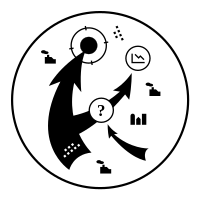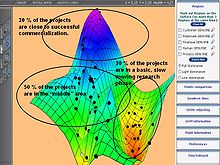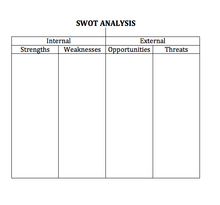|
Posted: 25 Dec 2015 01:34 PM PST
Grimm's law
From Wikipedia, the free encyclopedia
History[edit]
Grimm's law was the first non-trivial systematic sound change to be discovered in philology; its formulation was a turning point in the development of linguistics, enabling the introduction of a rigorous methodology to historical linguistic research. The correspondence between Latin p and Germanic f was first noted by Friedrich von Schlegel in 1806. In 1818, Rasmus Christian Rask elaborated the set of correspondences to include other Indo-European languages, such as Sanskrit and Greek, and the full range of consonants involved. In 1822, Jakob Grimm formulated the law as a general rule in his book Deutsche Grammatik, and extended it to include standard German. (Jakob was the elder of the Brothers Grimm.)
Grimm himself already noticed that there were many words that had different consonants from what his law predicted. These exceptions defied linguists for a few decades, but eventually received explanation from Danish linguist Karl Verner in the form of Verner's law.
Overview[edit]
Grimm's law consists of three parts which form consecutive phases in the sense of a chain shift. [1] The phases are usually constructed as follows:
- Proto-Indo-European voiceless stops change into voiceless fricatives.
- Proto-Indo-European voiced stops become voiceless stops.
- Proto-Indo-European voiced aspirated stops become voiced stops or fricatives (as allophones).
This chain shift can be abstractly represented as:
- bʰ > b > p > ɸ
- dʰ > d > t > θ
- gʰ > g > k > x
- gʷʰ > gʷ > kʷ > xʷ
Here each sound moves one position to the right to take on its new sound value. Note that within Proto-Germanic, the sounds denoted by ⟨b⟩, ⟨d⟩, ⟨g⟩ and ⟨gw⟩ were stops in some environments and fricatives in others, so bʰ > b should be understood here as bʰ > b/β, and likewise for the others. The voiceless fricatives are customarily spelled ⟨f⟩, ⟨þ⟩,⟨h⟩ and ⟨hw⟩ in the context of Germanic.
The exact details of the shift are unknown, and it may have progressed in a variety of ways before arriving at the final situation. The three stages listed above show the progression of a "pull chain", in which each change leaves a "gap" in the phonological system that "pulls" other phonemes into it to fill the gap. But it is also conceivable that the shift happened as a push chain, where the changes happened in reverse order, with each change "pushing" the next forward to avoid merging the phonemes.
The steps could also have occurred somewhat differently. Another possible sequence of events could have been:
- Voiceless stops are allophonically aspirated under most conditions.
- Voiced stops become voiceless stops.
- Aspirated stops become fricatives.
This sequence would lead to the same end result. This variety of Grimm's law is often suggested in the context of the glottalic theory of Proto-Indo-European, which is followed by a minority of linguists. This theoretical framework assumes that "voiced stops" in PIE were actually voiceless to begin with, so that the second phase did not actually exist as such, or was not actually devoicing but a loss of some other articulatory feature such as glottalization. This alternative sequence also accounts for the phonetics of Verner's law (see below), which are easier to explain within the glottalic theory framework when Grimm's law is formulated in this manner.
Further changes[edit]
Once Grimm's law had taken place, there was only one type of voiced consonant, with no distinction between voiced stops and voiced fricatives. They eventually became stops at the beginning of a word (for the most part), as well as after a nasal consonant, but fricatives elsewhere. Whether they were plosives or fricatives at first is therefore not clear. The voiced aspirated stops may have first become voiced fricatives, before hardening to stops under certain conditions. But they may also have become stops at first, softening to fricatives in most positions later.
Around the same time as Grimm's law took place, another change occurred known as Verner's law. Verner's law caused the voicing of the voiceless fricatives that resulted from Grimm's law under some conditions, creating apparent exceptions to the rule. For example:
- Proto-Indo-European *bʰréh₂tēr ("brother") > Proto-Germanic *brōþēr (Old English broþor, Old High German bruothar/bruodar)
- Proto-Indo-European *ph₂tḗr ("father") > Proto-Germanic *fadēr (Old English fæder, Old High German fatar)
Here, the same sound *t appears as *þ in one word (following Grimm's law), but as *d in another (apparently violating Grimm's law). See the Verner's law article for a more detailed explanation of this discrepancy.
The early Germanic *gw that had arisen from Proto-Indo-European *gʷʰ (and from *kʷ through Verner's law) underwent further changes of various sorts:
- After *n it was preserved as a labiovelar stop *gw, but later changed to a plain velar *g in West Germanic.
- Following vowels, it seems to have become *w, presumably through a fricative stage *ɣʷ.
- Word-initially, the most plausible reflex is a labiovelar stop *gʷ at first, but the further development is unclear. In that position, it became either *w, *g or *b during late Proto-Germanic.
- The regular reflex next to *u would likely have been *g, due to loss of the labial element before a labial vowel. (See boukólos rule)
Perhaps the usual reflex was *b (as suggested by the connection of bid < *bidjaną and Old Irish guidid), but *w appears in certain cases (possibly through dissimilation when another labial consonant followed?), such as in warm and wife (provided that the proposed explanations are correct). Proto-Germanic *hw voiced by Verner's law fell together with this sound and developed identically, compare the words for 'she-wolf': from Middle High German wülbe[citation needed] and Old Norse ylgr, one can reconstruct Proto-Germanic nominative singular *wulbī, genitive singular *wulgijōz, from earlier *wulgwī, *wulgwijōz. [2][not in citation given]
Examples[edit]
Further changes following Grimm's law, as well as sound changes in other Indo-European languages, can sometimes obscure its effects. The most illustrative examples are used here.
| Proto-Indo-European | Meaning | Non-Germanic (unshifted) cognates | Change | Proto-Germanic | Germanic (shifted) examples |
|---|
| *pṓds | "foot" | Ancient Greek: πούς, ποδός (poús, podós), Latin:pēs, pedis, Sanskrit: pāda, Russian: под (pod) "under; floor", Lithuanian: pėda, Latvian pēda | *p > f [ɸ] | *fōt- | English: foot, West Frisian: foet, German: Fuß, Gothic: fōtus, Icelandic, Faroese: fótur, Danish: fod, Norwegian, Swedish: fot |
|---|
| *trit(y)ós | "third" | Ancient Greek: τρίτος (tritos), Latin: tertius, Welsh:trydydd, Sanskrit: treta, Russian: третий (tretij), Lithuanian: trečias, Albanian: tretë | *t > þ [θ] | *þridjô | English: third, Old Frisian: thredda, Old Saxon: thriddio, Gothic:þridja, Icelandic: þriðji, Danish: tredje |
|---|
| *ḱwón- ~ *ḱun- | "dog" | Ancient Greek: κύων (kýōn), Latin: canis, Welsh: ci(pl. cwn) | *k > h [x] | *hundaz | English: hound, Dutch: hond, German: Hund, Gothic: hunds, Icelandic, Faroese: hundur, Danish, Norwegian, Swedish: hund |
|---|
| *kʷód | "what" | Latin: quod, Irish: cad, Sanskrit: kád, Russian: ко- (ko-), Lithuanian: kas | *kʷ > hw [xʷ] | *hwat | English: what, Gothic: ƕa ("hwa"), Icelandic: hvað, Faroese:hvat, Danish: hvad, Norwegian: hva |
|---|
| *dʰewb- | "deep" | Lithuanian: dubùs | *b > p [p] | *deupaz | English: deep, West Frisian: djip, Dutch: diep, Icelandic: djúpur, Swedish: djup, Gothic diups |
|---|
| *déḱm̥t | "ten" | Latin: decem, Greek: δέκα (déka), Irish: deich, Sanskrit: daśan, Russian: десять (desyat'), Lithuanian: dešimt | *d > t [t] | *tehun | English: ten, Dutch: tien, Gothic: taíhun, Icelandic: tíu, Faroese: tíggju, Danish, Norwegian: ti, Swedish: tio |
|---|
| *gel- | "cold" | Latin: gelū, Greek: γελανδρός (gelandrós), Lithuanian: gelmenis, gelumà | *g > k [k] | *kaldaz | English: cold, West Frisian: kâld, Dutch: koud, German: kalt, Icelandic, Faroese: kaldur, Danish: kold, Norwegian: kald, Swedish: kall |
|---|
| *gʷih₃wós | "alive" | Lithuanian: gyvas, Russian:, живой (živoj), Sanskritjīvá- | *gʷ > kw [kʷ] | *kwi(k)waz | English: quick, West Frisian: kwik, kwyk, Dutch: kwiek, German: keck, Gothic: qius, Icelandic, Faroese: kvikur, Danish:kvik, Swedish: kvick, Norwegian kvikk |
|---|
| *bʰréh₂tēr | "brother" | Sanskrit: bhrātṛ, Ancient Greek: φρατήρ (phrātēr) ("member of a brotherhood") | *bʰ > b [b]/[β] | *brōþēr | English: brother, West Frisian, Dutch: broeder, German:Bruder, Gothic: broþar, Icelandic, Faroese: bróðir, Danish, Swedish, Norwegian: broder |
|---|
| *médʰu | "honey" | Sanskrit: mádhu, Homeric Greek: μέθυ (methu) | *dʰ > d [d]/[ð] | *meduz | English: mead, East Frisian: meede, Dutch: mede, Danish/Norwegian: mjød, Icelandic: mjöður , Swedish: mjöd |
|---|
| *steygʰ- | "walk, step" | Sanskrit: stighnoti, Ancient Greek: στείχειν (steíkhein) | *gʰ > g [ɡ]/[ɣ] | *stīganą | Old English: stīgan, Dutch: stijgen, German: steigen, Icelandic, Faroese: stíga, Danish, Norwegian: stige, Gothic steigan (all meaning "ascend, climb") |
|---|
| *sengʷʰ- | "sing" | Homeric Greek: ἐάφθη (eáphthē) "sang, sounded",ὀμφή (omphē) "voice" | *gʷʰ > gw [ɡʷ]
(After n) | *singwaną | English: sing, West Frisian: sjonge, Dutch: zingen, German:singen, Gothic: siggwan, Old Icelandic: syngva, syngja, Icelandic, Faroese: syngja, Swedish: sjunga, Danish:synge/sjunge |
|---|
| *gʷʰermós | "warm" | Sanskrit: gharmá-, Avestan: garəmó, Old Prussian:gorme | *gʷʰ > gw > {b, g w}
(Otherwise merged with existing g andw) | *warmaz | English: warm, West Frisian: waarm, Dutch, German: warm, Swedish: varm, Icelandic: varmur |
|---|
This is strikingly regular. Each phase involves one single change which applies equally to the labials (p, b, bʰ, f) and their equivalent dentals (t, d, dʰ, þ), velars (k, g, gʰ, h) and rounded velars (kʷ, gʷ, gʷʰ, hʷ). The first phase left the phoneme repertoire of the language without voiceless stops, the second phase filled this gap, but created a new one, and so on until the chain had run its course.
Behaviour in consonant clusters[edit]
When two obstruents occurred in a pair, the first underwent Grimm's law if possible, while the second did not. If either of the two was voiceless, the whole cluster was devoiced, and the first obstruent also lost its labialisation, if it was present.
Most examples of this occurred with obstruents preceded by *s (resulting in *sp, *st, *sk, *skʷ), or obstruents followed by *t (giving *ft, *ss, *ht, *ht) or *s (giving *fs, *ss, *hs, *hs). The latter change was frequent in suffixes, and became a phonotactic restriction known as the Germanic spirant law. This rule remained productive throughout the Proto-Germanic period. The cluster *tt became *ss, but this was often restored to *st later on.
Examples with preceding *s:
| Non-Germanic examples | Change | Germanic examples |
|---|
| Latin: spuere, Lithuanian: spjáuti | *sp | English: spew, West Frisian: spije, Dutch: spuwen, German: speien, Danish, Norwegian, Swedish:spy, Icelandic: spýja, Faroese: spýggja, Gothic: speiwan |
|---|
| Latin: stāre, Irish: stad, Sanskrit: sta, Russian: стать (stat'), Lithuanian: stoti, Persian: ايستادن (istâdan) | *st | English: stand, Icelandic, Faroese, Norwegian: standa, Gothic: standan; West Frisian: stean, Dutch: staan, German: stehen, Danish, Swedish: stå |
|---|
| Lithuanian: skurdus | *sk | English: short, Old High German: scurz, Icelandic: skorta |
|---|
| Irish: scéal | *skʷ | English: scold, Icelandic: skáld, Norwegian: skald; West Frisian: skelle, Dutch: schelden, German:schelten |
|---|
- Some linguists dispute the origin of the word "scold", but Julius Pokorny among others proposed *skwetlo as the assumed root.
- English and German later underwent a change /sk/ > /ʃ/. German also changed /sp/ and /st/ to /ʃp/ and /ʃt/.
- Dutch has /sk/ > /sx/, though this is a separate development that occurred in Middle Dutch.
Examples with following *t:
| Non-Germanic examples | Change | Germanic examples |
|---|
| Ancient Greek: κλέπτης (kleptēs), Old Prussian: au-klipts "hidden" | *pt→ft | Gothic: hliftus "thief" |
|---|
| Latin: atta, Greek: ἄττα (átta) | *tt→tt | Old High German: atto, Gothic: atta "father" |
|---|
| Ancient Greek: οκτώ (oktō), Irish: ocht, Latin: octō | *kt→ht | English: eight, West Frisian, Dutch, German: acht, Gothic:ahtáu, Icelandic: átta (pronounced [ˈauhta]) |
|---|
| Irish: anocht, Latin: nox, noct-, Greek: νύξ, νυκτ- (núks, nukt-), Sanskrit: नक्तम् (naktam), Lithuanian:naktis, Hittite (genitive): nekuz (pronounced /nekʷts/) | *kʷt→ht | English: night, West Frisian, Dutch, German: nacht, Gothic:nahts, Icelandic: nótt (pronounced [ˈnouht]) |
|---|
- Icelandic nótt /nouht/ comes from Old Norse nǫ́tt, nátt, from Proto-Germanic *naht-. The Germanic *ht regularly becomes *tt in Old Norse, and this then becomes preaspirated in Icelandic. Thus, the [h] of the modern Icelandic form is not a direct descendant of the Germanic /h/.[3] The same ancestry holds for the /tt/ of Icelandic átta as well.[4]
Correspondences to PIE[edit]
The Germanic "sound laws", combined with regular changes reconstructed for other Indo-European languages, allow one to define the expected sound correspondences between different branches of the family. For example, Germanic (word-initial) *b- corresponds regularly to Latin *f-, Greek pʰ-, Sanskrit bʰ-, Slavic, Baltic or Celtic b-, etc., while Germanic *f- corresponds to Latin, Greek, Sanskrit, Slavic and Baltic p- and to zero (no initial consonant) in Celtic. The former set goes back to PIE * bʰ- (faithfully reflected in Sanskrit and modified in various ways elsewhere), and the latter set to PIE *p- (shifted in Germanic, lost in Celtic, but preserved in the other groups mentioned here).

|

















